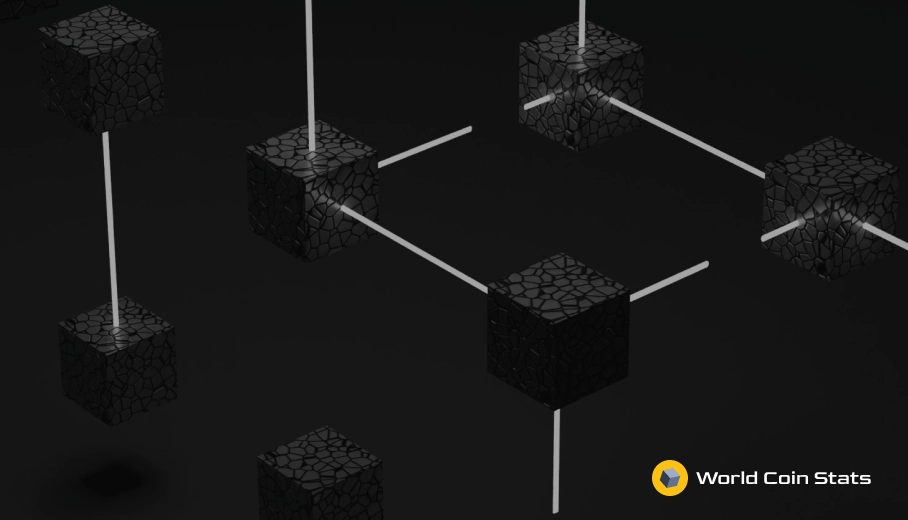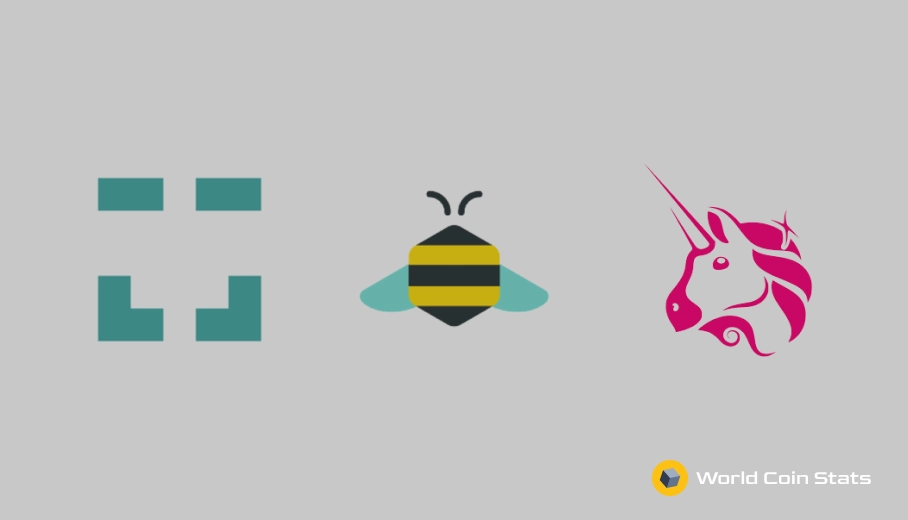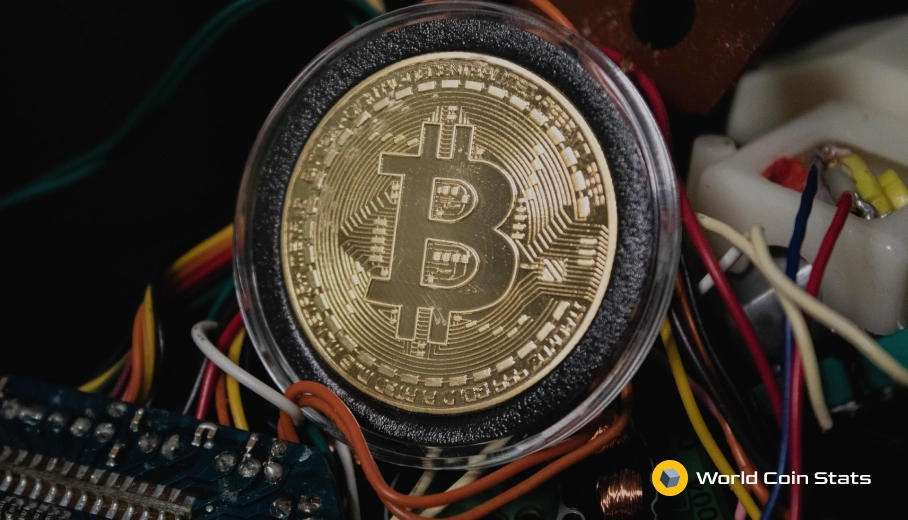Blockchain for Dummies – Guide to Blockchain
Bitcoin, and blockchain technology by extension, took the internet by storm in 2009 and 2017. However, many people do not know anything about this amazing technology that could usurp the traditional technology model.
And that’s why we have written this article that will cover everything you need to know about blockchain technology. Don’t worry, we’ve made it beginner friendly – you won’t need a PhD. in Computer Science to understand this article.
Contents
Blockchain will be Huge
As mentioned earlier, blockchain technology took the internet by storm over a decade ago. It’s taken a huge share of the infrastructure technology over the past few years.
Did you know that Amazon, Google, and other tech companies are devoting resources to develop blockchain solutions for their own unique problems?
Well, they have been doing that for a few years. When you look at it, blockchain is receiving the same amount of attention that the internet received in the early 1990s.
For those that don’t know, a media frenzy formed around what we now consider everyday technology like email and internet browsers.
As we all know, many people became millionaires as a result of the internet. The same will likely occur with blockchain, so it’s certainly worthwhile to have an understanding of blockchain.
How Blockchain Works
Blockchain really isn’t difficult to understand. In fact, it’s not even that much different than a centralized platform, but people sometimes have a difficult time understanding the smaller details.
This section will cover the smaller details in a way that makes sense. You won’t be able to use this to launch the next Bitcoin. It will give you a better understanding when you read the next CNN article about blockchain technology at some tech company.
Blockchain Terms
First, you need to understand the terms used to describe blockchain technology, or the rest of the article won’t make any sense.
Fortunately, you don’t need to understand that many terms. Here are some of the most relevant terms used to describe blockchain technology.
Ledger
The ledger is probably the easiest concept to understand because it has a parallel in the traditional, centralized model.
What is that parallel?
Your bank ledger. That’s right, you used to have a physical ledger book with all your transactions and balances before the invention of the computer.
You had a copy and the bank had a copy. This ledger would be used to determine the balance of your account. It has gone online these days, and the concept remains the exact same.
In blockchain, there are tens of thousands of different copies of the ledger on nodes (covered later). And it’s public, which basically removes fraud.
Miners
The definition of miner seems to change on a daily basis. Sometimes it changes depending on the project.
That’s a little too complicated, so we’ll keep things nice and simple. Basically, miners are individuals that run a specific software that uses their computing power to power the blockchain.
You might ask, why would someone donate computing power to power the blockchain?
One reason, miners receive cryptocurrency in exchange for providing computing power to the blockchain (read: mining).
If you want, then you can think of mining as providing computing power to a decentralized server.
Nodes
Nodes are a little more complicated to understand, but it’s easy enough. A node is still donating computing resources.
However, a node does not power the blockchain. Instead, they keep a copy of the updated ledger on their computer. This ledger is used to update the balance of cryptocurrency in wallets and communicate with miners to determine which wallets to update.
Protocols
Protocols are rules that the mining computers must follow. For Bitcoin, this means determining the complexity of the mathematical problem that the miner must solve.
If there are a lot of miners, then the complexity increases and the payoff for solving it decreases. The difficulty with fewer miners, which encourages more miners to power the blockchain.
Bitcoin obviously isn’t the only technology using blockchain. However, the same concept applies to all blockchain technology.
Public and Private Keys
Finally, public and private keys are used for cryptocurrency. The best parallel is your bank information:
A public key would be the equivalent to your bank balance. With one major difference, in cryptocurrency the balance is public, but it’s view-only.
The private key is your login. You use the private key to access your wallet and transfer cryptocurrency in and out of it.
How Blockchain Works – Technical Details
With those terms defined, we can now cover how blockchain works in a more precise manner.
First, a blockchain technology must be developed by a team of developers. This technology includes a set of protocols, downloadable software for miners, and a ledger. It should have strong cryptography for added security.
Next, miners download the blockchain software onto their computer. This software connects them to the blockchain, and it provides computing power to run the blockchain. The miners receive currency such as Bitcoin, Ethereum, Monero, or other cryptocurrency in exchange for providing this computing power.
In other words, the blockchain exists on every single computer running the blockchain software.
Finally, to keep track of all the transactions there are users running ledger software on their computer. This ledger updates as each transaction is fulfilled.
In Bitcoin, every wallet receives a ledger update from multiple ledgers when a transfer is made. This is why it can sometimes take some time to make a transfer if you haven’t made a transaction in a long time – the entire ledger has to update!
One last thing, the entire ledger is publicly available. This allows you to view the balances and transactions of every single wallet on the blockchain. However, you can’t see who owns the wallet unless they have disclosed that they own the wallet.
This makes cryptocurrency great for basic anonymity.
Note: Everything listed also applies to private blockchain technology with one major difference: a private blockchain is not publicly accessible. The miners, ledger, and everything else stays the same.
Frequently Asked Questions (FAQ)
Here are some frequently asked questions about blockchain and how it works. These aren’t comprehensive questions. But they should provide enough information to give you a general idea about blockchain.
What was the first technology that used blockchain?
The first technology to use blockchain technology was Bitcoin. And Bitcoin was created in 2009.
The developer(s) of Bitcoin, Satoshi Nakamoto, created the blockchain system.
Does blockchain have a location?
Yes. The blockchain is located on every single computer running blockchain software. In other words, the blockchain is decentralized.
This stands in contrast to the traditional, centralized model that has all the computing on a handful of different servers.
How many blockchains are there?
No one knows the exact number of blockchains in existence. Experts estimate it’s anywhere from a couple thousand to over 10,000.
It’s hard to know the exact number because many blockchains are used for private, commercial use. On top of that, many cryptocurrencies are built on top of an existing blockchain such as Ether.
How anonymous is blockchain technology?
Blockchain technology has a good base level anonymity because no personal information is required to get started on the blockchain or open a wallet. However, it is not difficult to find the owner of a wallet because the overwhelming majority of blockchain transactions can be connected to a wallet that had an interaction with a wallet with your personal information.
For instance, if you transferred Bitcoin from Coinbase to your wallet, then an investigator could determine your identity from Coinbase.
However, there are ways around this and some cryptocurrencies, such as Monero, have dynamically generated wallet keys, which makes tracking transactions extremely difficult.
Benefits of Blockchain
Blockchain has many benefits over the more traditional, centralized technology used at the moment. Here are some of those benefits:
Unchangeable Data
A huge advantage of blockchain is that the data on the blockchain is unchangeable. In other words, a transaction cannot be reversed once it takes place. A record of the transaction will always exist on the ledger.
Many users will place messages on the blockchain for exactly that reason – once it’s there; it’s there forever.
Anonymous
As mentioned previously, blockchain technology is anonymous. This has many benefits if you have assets that you do not want others to discover.
Plus, do you really want other parties knowing exactly how much money you have to your name?
No, you don’t.
No Intermediaries
Perhaps the biggest benefit of blockchain technology is that it does not have any central authority running the server. All the computing power for the blockchain is distributed across many different computers operating the software.
This means you don’t have to worry about server crashes, rogue server administrators, high fees, or hackers targeting one specific point.
There aren’t any disadvantages to having no intermediaries
Security
Blockchain technology is considered much more secure by experts. This is mostly related to the public, decentralized nature of the technology.
Hackers do not have one specific point of attack for the system itself. Sure, they can operate scams, but there has never been a blockchain hack.
The same cannot be said about a centralized server. Do you remember the Equifax hack?
A hack like that would never have happened if Equifax used blockchain technology.
Low Fees
Finally, blockchain technology has absurdly low fees because no centralized authority exists to drive up the fees.
You can transfer Bitcoin anywhere in the world in a few minutes for a few pennies. You can compare that to an international bank transfer that can take up to a week and usually costs $20-$30.
Blockchain Security for Dummies
The most common concern about blockchain is security. Many people have wondered how a decentralized platform can be secure. Doesn’t everyone have access to every transaction?
Yes, everyone does have access to every transaction and balance with blockchain technology. Don’t worry, it’s still safe. There has never been a successful hack of any blockchain technology for a few different reasons.
Decentralized
First of all, blockchain is decrypted technology. This means that a hacker does not have one location to target. One location means your information is potentially in the hands of one system administrator or in one server warehouse somewhere in Texas.
Basically, an entire banking server could be hacked by on-site security allowing unauthorized access to scrupulous people, a rogue system administrator, or a system administrator viewing websites he shouldn’t be viewing at work.
It might sound absurd, but those methods have all been used to hack servers in the past and will continue to be used.
A successful hack of blockchain would require compromising every machine in the system, which can be tens of thousands of different machines.
The odds of that happening are infetisemely low. It’s practically impossible for that to actually happen, so you don’t have to worry about it.
High Level Encryption
We’ve already covered that a hacker cannot breach a blockchain system because it’s distributed across so many different machines. However, could they crack your private key? How safe is your password from attack?
It’s very safe. The encryption that Bitcoin, and other blockchain technology uses, is so advanced that not even the NSA can break into it.
That should answer any questions about the safety of your private key – it’s safe. You don’t have anything to worry about.
Protocols
The protocols add an additional level of security because no single party authenticates a transaction. Each transaction requires verification by miners and nodes.
What does this mean?
It means that your Bitcoin wallet will never get banned or closed for political dissent or any other reason. Once you do a transaction, no individual party can stop it from going through.
That’s a level of security you do not find with a centralized technology.
Final Thoughts
Well, that about covers it for blockchain. Please note that this article will not make you an expert in blockchain, but it should have done a decent job at getting you to understand what exactly is meant by “blockchain technology.”
The most important part that matters is that you understand blockchain technology means decentralizatized technology. That decentralization prevents many of the problems that you find in a centralized technology.
It’s also why blockchain technology will one day become the norm – it’s an unstoppable force. Just give it 10-15 more years.




